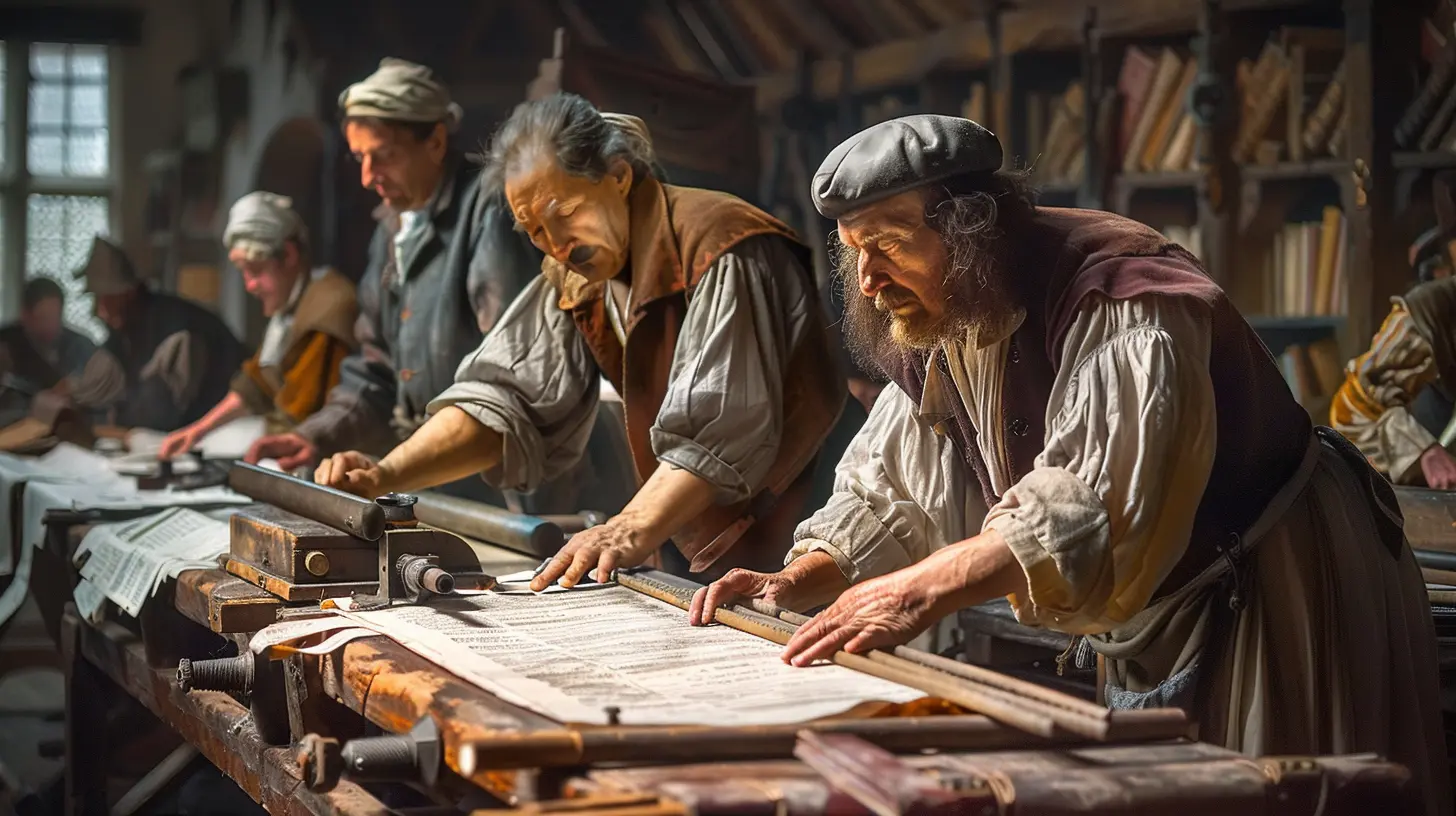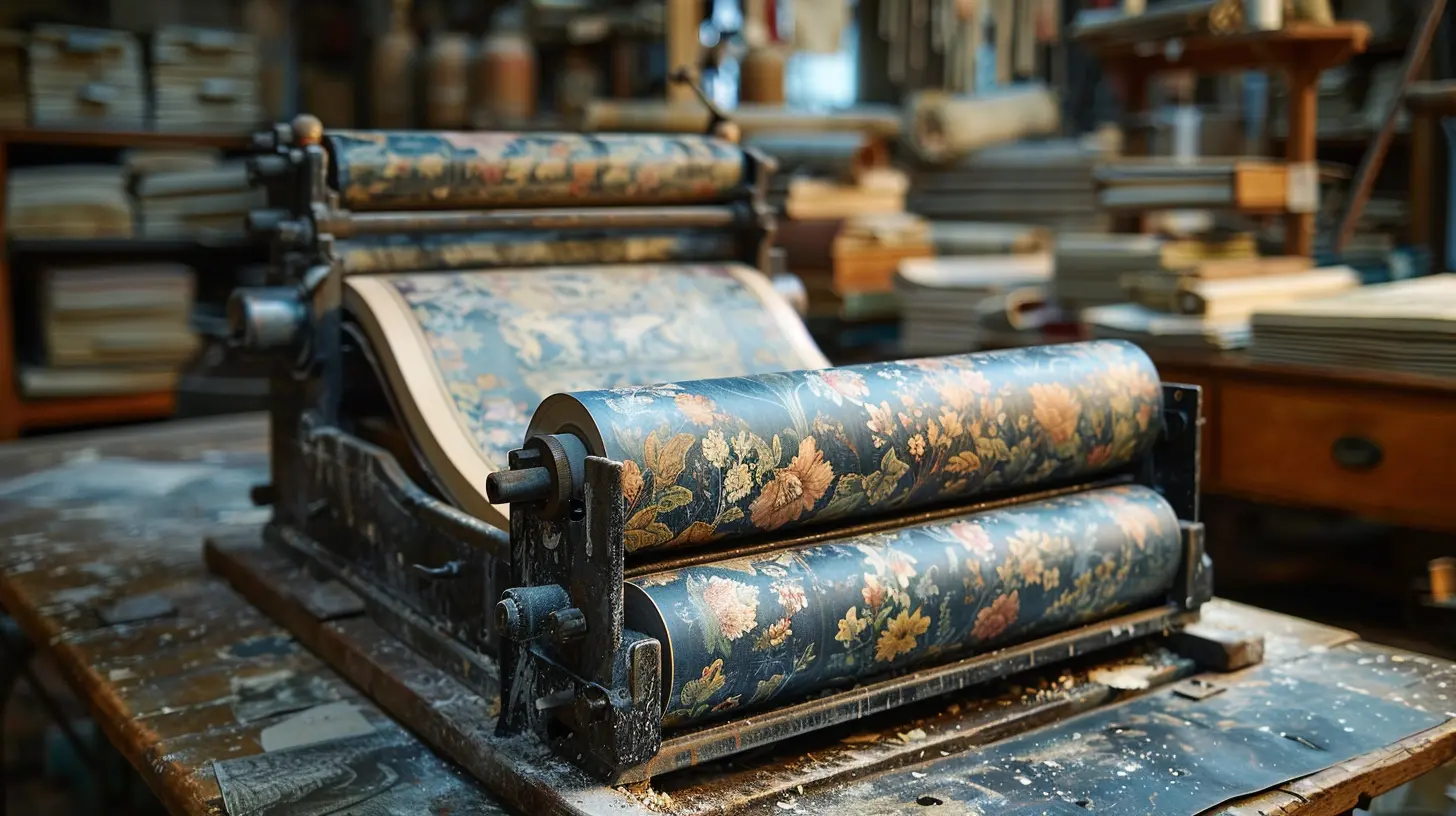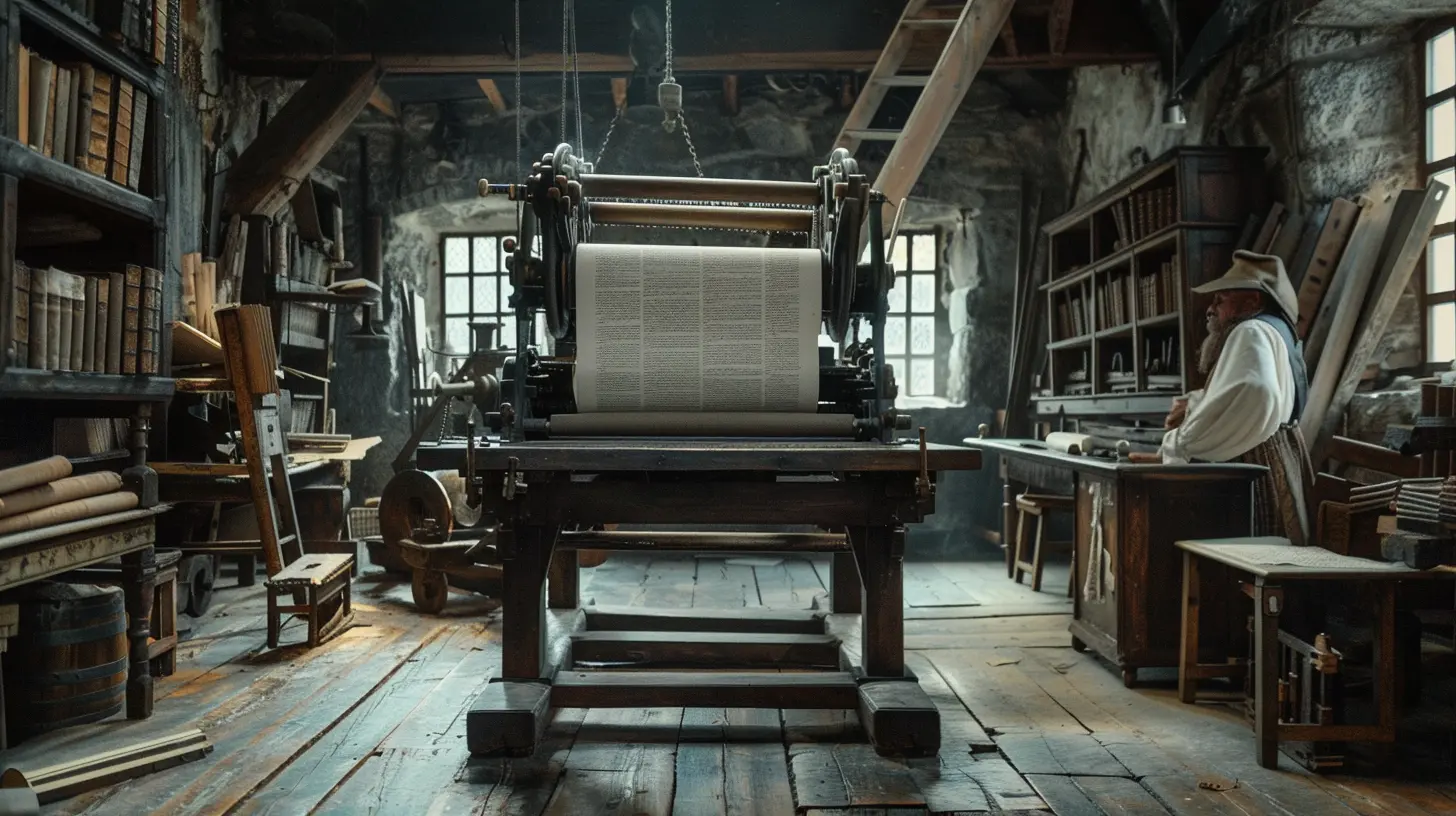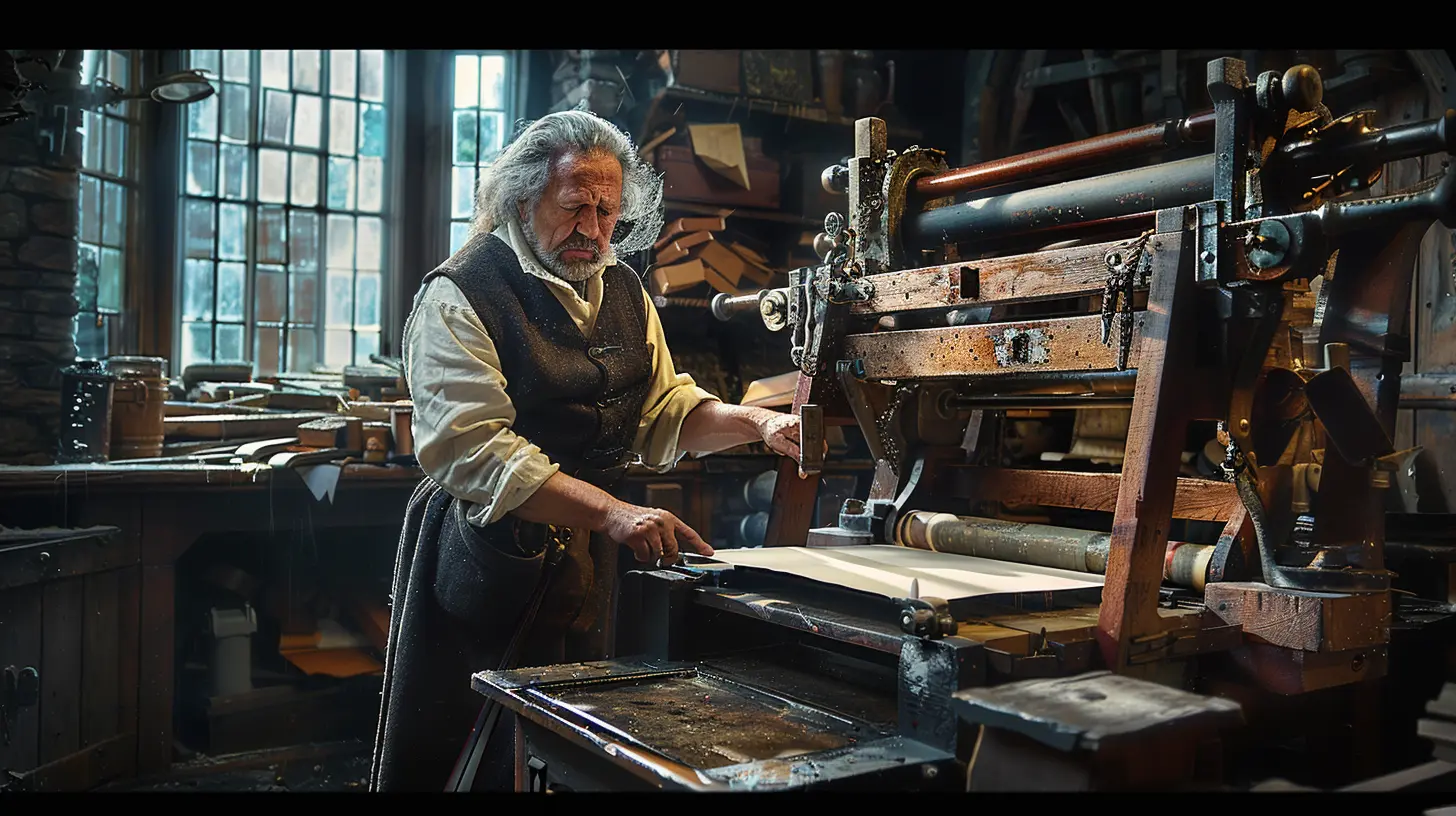How the Printing Press Transformed Society
5 August 2025
Imagine a world where books are rare treasures, handwritten meticulously by scribes, and knowledge is reserved for the elite. That was the reality before the printing press revolutionized how we share and consume information. The invention of the printing press by Johannes Gutenberg in the 15th century was nothing short of a game-changer. It altered the course of history, impacting education, religion, politics, and even the economy. But how exactly did this simple yet powerful machine transform society? Let’s dive in.
The Birth of the Printing Press
Before Gutenberg's innovation in the 1440s, books were primarily created by hand—a painstaking, expensive process that made them scarce. Most people couldn’t afford a book, and literacy was largely limited to clergy and the wealthy. Then, Gutenberg introduced movable type printing, an ingenious system that allowed for mass production of texts.His printing press worked by arranging individual letter blocks, inking them, and pressing them onto paper. This method significantly reduced the time and effort needed to produce books. The first major book printed using this technology? The Gutenberg Bible. This wasn’t just a triumph of engineering—it was the beginning of a knowledge explosion.
Making Knowledge Accessible to the Masses
With books becoming cheaper and more widely available, literacy rates began to climb. Access to knowledge was no longer confined to monks in monasteries or noble families. Suddenly, the common person could read and learn, opening doors to new ideas and perspectives.Think about it: before the printing press, learning was like trying to fill a bucket with a teaspoon. After its invention, it became more like turning on a firehose. Schools and universities began to thrive, as textbooks became more affordable. Education was no longer a luxury—it was becoming a right.
Fueling the Renaissance
The Renaissance was all about rediscovering art, science, and philosophy. But none of that would have spread so rapidly without the printing press. Suddenly, the groundbreaking ideas of thinkers like Leonardo da Vinci, Galileo, and Machiavelli weren’t restricted to a few scholars. Their works could be printed and shared across Europe.This era saw an explosion of creativity and innovation. Artists could study human anatomy in detail thanks to printed diagrams. Scientists could compare notes with peers across countries. Political theories could spread, helping to reshape governance and society. The printing press wasn’t just a tool—it was the fuel behind a cultural revolution.
The Reformation and Religious Impact
One of the most dramatic societal shifts sparked by the printing press was the Protestant Reformation. Before, the Catholic Church held a tight grip on religious knowledge, with the Bible written only in Latin and read exclusively by clergy. But then came Martin Luther.Luther famously nailed his Ninety-Five Theses to a church door in 1517, challenging the Church’s authority. But what really spread his message? The printing press. His writings were quickly copied and distributed, allowing ordinary people to read his arguments for themselves. Soon, the Bible was being translated into local languages, making religion more personal and less reliant on the Church’s interpretation.
This led to massive religious upheaval. New Protestant denominations emerged, the Catholic Church faced reforms, and religious conflicts erupted across Europe. All of this was fueled by the power of the printed word.
The Rise of Journalism and Political Influence
Fast forward a couple of centuries, and the printing press had evolved into something even more powerful: newspapers. Suddenly, information about politics, war, and society could reach the public in real-time (or at least, as quickly as printing allowed).The ability to print pamphlets and newspapers played a critical role in revolutions. Think about the American Revolution—colonists were motivated by printed materials like Common Sense by Thomas Paine, which criticized British rule. Likewise, during the French Revolution, printing helped spread revolutionary ideas, uniting people against the monarchy.
The press became a watchdog of power, holding governments accountable and giving the public a voice. Today’s digital media owes a huge debt to these early print publications.
Boosting Trade and Economic Growth
Aside from intellectual and political transformations, the printing press had a massive economic impact. The rise in literacy and the spread of ideas led to an increase in skilled labor. More people could read manuals, study business principles, and participate in trade.Printing also boosted industries like paper-making, ink production, and bookbinding. It created job opportunities while making business contracts and records more standardized and trustworthy. In other words, the printing press didn’t just change how we think—it changed how we work and trade.
Shaping Modern Culture
As time went on, the printing press became the foundation for mass media. Books, newspapers, and pamphlets laid the groundwork for everything from public libraries to bestseller lists. Even today, in the digital age, the essence of the printing press lives on in e-books, blogs, and online publishing.Imagine a world without printed material—no newspapers, no novels, no posters advertising your favorite concert. It’s nearly impossible to think about because printed media is so deeply embedded in our daily lives. The printing press didn’t just transform society; it built the modern world.
Conclusion
The printing press was more than just an invention; it was a catalyst for change. It democratized knowledge, fueled revolutions, empowered education, and reshaped economies. Without it, the world we know today—full of books, newspapers, and the free exchange of ideas—would not exist.Gutenberg’s simple machine set humanity on a path of rapid progress. Whether in Renaissance Europe or the digital era, one thing remains constant: the power of the written word. And it all started with a few inked letters pressed onto paper.
all images in this post were generated using AI tools
Category:
History LessonsAuthor:

Olivia Chapman
Discussion
rate this article
1 comments
Faye Frye
In ink's embrace, the world took flight, Ideas danced in the softest light. Pages turned, minds set free, Knowledge shared, a symphony. The pressing of thoughts, a revolution's start, Uniting souls, igniting hearts. Through printed whispers, history swayed, A tapestry of thought, forever laid.
August 13, 2025 at 4:44 AM

Olivia Chapman
Thank you for capturing the essence of the printing press! Your poetic reflection beautifully illustrates how it democratized knowledge and sparked a transformative revolution in society.


